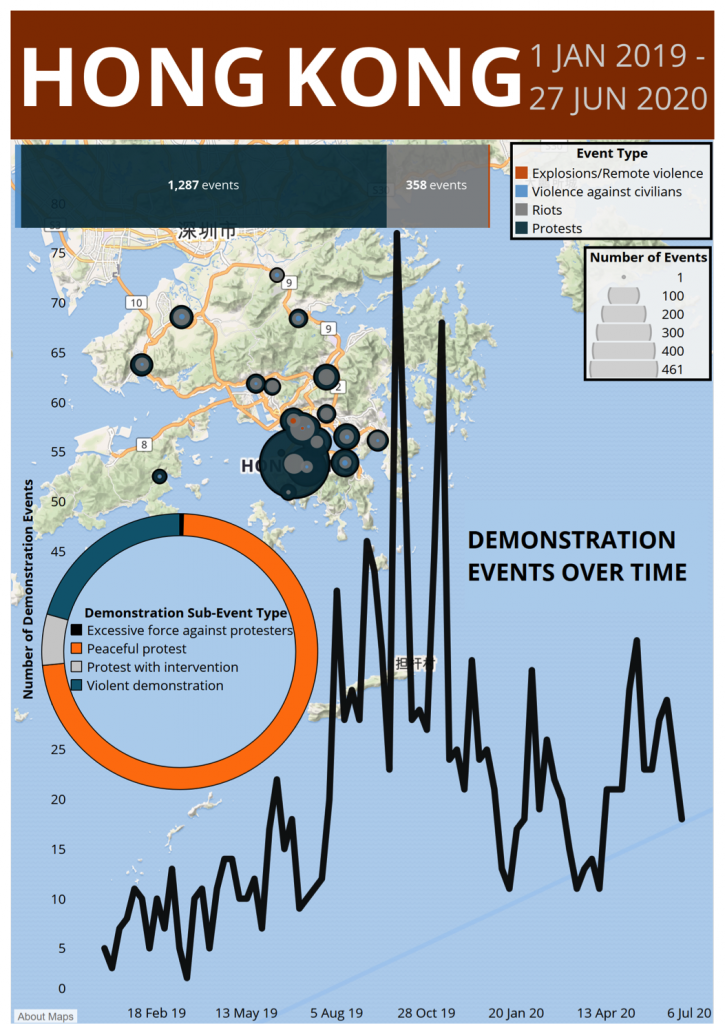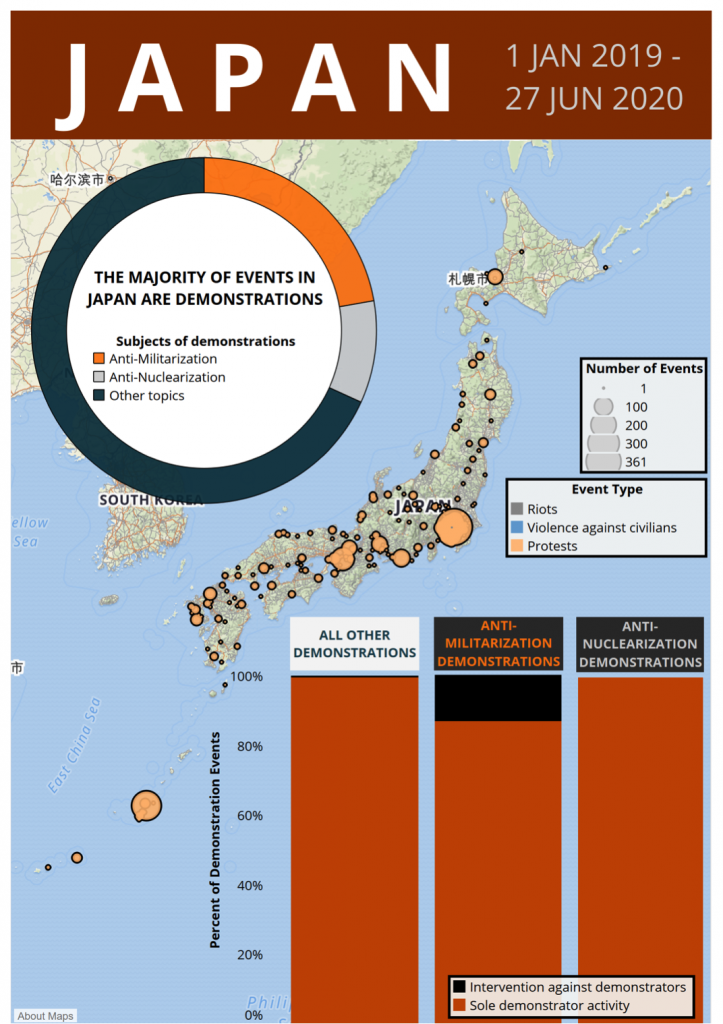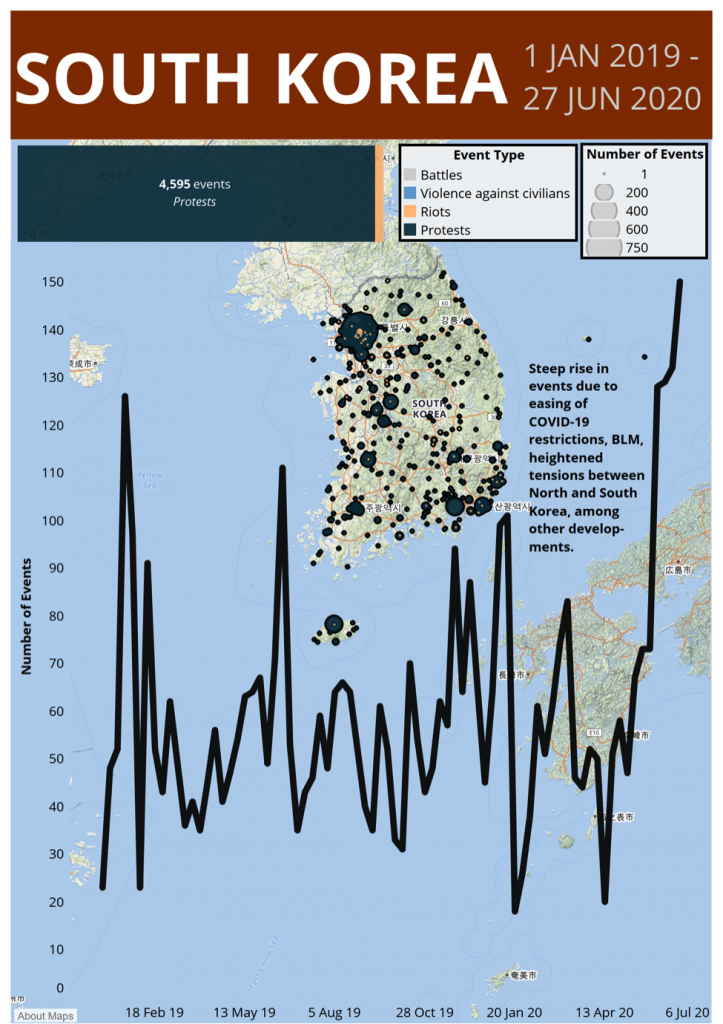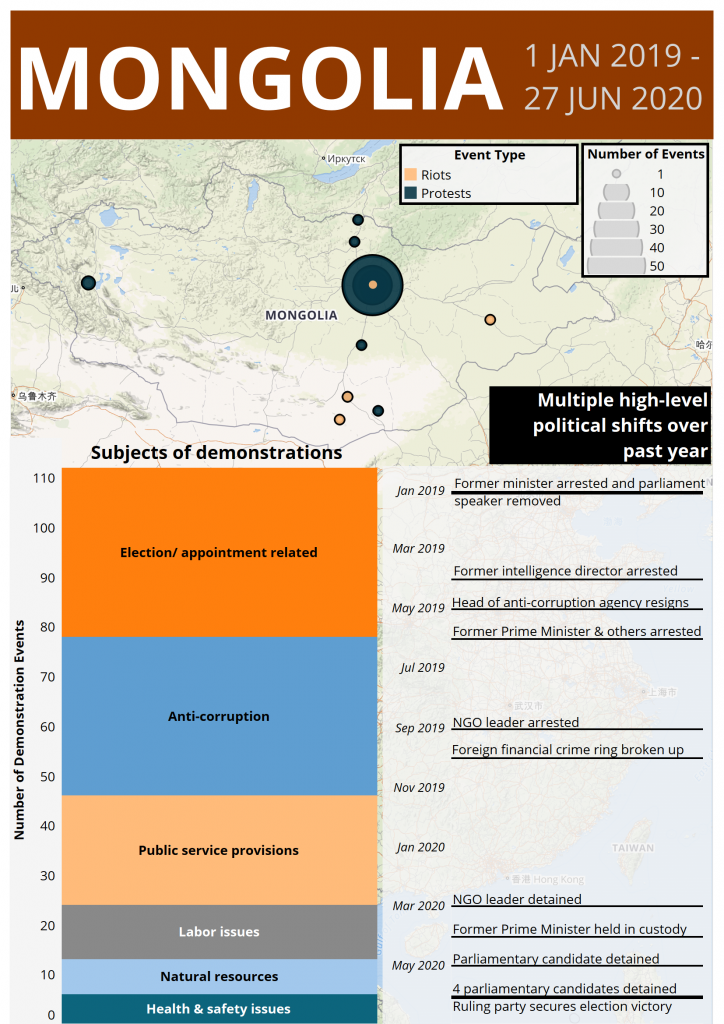ACLED’s new expansion to East Asia adds over 12,800 political violence, demonstration, and strategic development events to the dataset from the beginning of 2019 to the present. This report reviews key findings from the data for mainland China, Hong Kong, Japan, South Korea, North Korea, Mongolia, and Taiwan.
Mainland China
The majority of events in mainland China are labor-related demonstrations, mostly over unpaid wages. These demonstrations largely proceed peacefully and without intervention.
A significant portion — approximately 13% — of disorder events in mainland China, however, consists of violence targeting civilians, particularly assaults or disappearances of activists, petitioners, political dissidents, religious groups, and ethnic minorities. A detailed explanation of how ACLED codes these events can be found in this methodology brief.
In addition to direct violence such as torture in custody, members of religious groups also face state persecution by having their meeting venues, property, and statues destroyed or seized. Property destruction and seizure is the most common tactic used by state forces to target religious groups in China.

Hong Kong
As with mainland China, events in Hong Kong are primarily peaceful demonstrations that bring together small groups of people. These events are usually accompanied by petitioning activity.
However, demonstrations attracting particularly large numbers of participants — with reports suggesting between thousands to over a million — erupted throughout Hong Kong in June 2019. This movement began in response to the government’s effort to amend legislation allowing criminal suspects to be extradited to mainland China — contravening prior arrangements in which the Hong Kong government need not consider such extradition requests. The change would subject suspects in Hong Kong to charges in mainland China, where — according to international human rights organizations (Amnesty International, 2020) — the criminal justice system is flawed. From October to November 2019, the number of demonstration events peaked in Hong Kong, while the proportion of violent demonstrations nearly doubled relative to the previous two months. Demonstrations abruptly declined in January 2020 with the onset of the coronavirus pandemic and its accompanying restrictions on movement.
After a lull in activity between January to April 2020, demonstrations began to rise again in Hong Kong in May 2020. This resurgence follows a relaxation in coronavirus lockdown measures in the city. Trends in June thus far continue to point to higher numbers of demonstration events relative to earlier this year.

Japan
In Japan, the vast majority of events are peaceful protests. Two key issues are usually the focus of these events: anti-militarization and anti-nuclearization.
There is a prominent movement in the country opposing the militarization of Japan and also the presence of US troops on Japanese soil. These are usually the only events in which it is common for police to intervene, otherwise there are few clashes.
Anti-nuclearization protests are targeted against both nuclear weapons and nuclear power generation. This movement appears to be motivated by past crisis situations such as the Fukushima power plant disaster of 2011 and the nuclear bombs dropped on Hiroshima and Nagasaki at the end of World War Two.

South Korea
A strong protest culture exists in South Korea, with most events consisting of largely peaceful demonstrations, often related to labor issues. Throughout 2019, there has been an increase in anti-Japan protests triggered by trade and political disputes between the governments of South Korea and Japan, and a growing polarization of South Korean society along the progressive-conservative divide, triggering increased protests related to the domestic political situation.
One of the events that had the greatest societal impact in 2019 was the prosecution investigation that took place after the nomination of Cho Kuk as Minister of Justice in early August. Two different ideologies represented by Gwanghwamun Plaza and Seocho-dong have become a symbol of conservative-progressive confrontation. Tens of thousands of citizens gathered at each of the two squares to rally, with events lasting until early 2020.

North Korea
Due to severe information control policies, there are significant limits to accurately measuring disorder within North Korea (for more information, see this methodology brief). The majority of events coded by ACLED are strategic developments such as missile tests and important foreign policy events, such as high-level summits.

Mongolia
Within the context of East Asia, a smaller number of events are reported in Mongolia. The majority of events are peaceful protests against the government for a variety of reasons, including alleged corruption. There have also been multiple of arrests of political figures, which are significant strategic developments.

Taiwan
In Taiwan, protests are the most common type of event, with occasional riots. Environmental issues are the primary focus of demonstrations. ACLED also records a number of protests related to the January 2020 elections. Separately, demonstrators have gathered multiple times since 2019 in solidarity with the protest movement in Hong Kong.

© 2020 Armed Conflict Location & Event Data Project (ACLED). All rights reserved.





